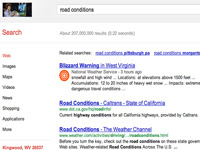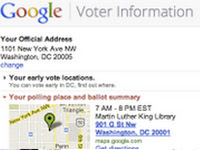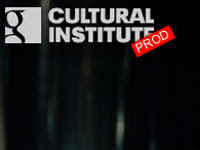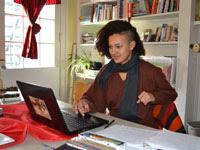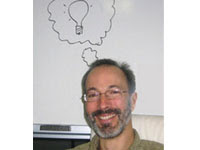Google for Nonprofits Newsletter - October 2012
108 views
Skip to first unread message
Leslie Hernandez
Nov 7, 2012, 12:36:11 PM11/7/12
to googlefor...@googlegroups.com
 | ||||||||||
| Google for Nonprofits Newsletter October 2012 | ||||||||||
|
| ||||||||||
| November 7, 2012 | ||||||||||
| ||||||||||
|
||||||||||
| Fall has arrived! With the first school semester in full swing and holiday fundraising efforts underway, we wanted to share some exciting updates on Public Alerts, the Google Cultural Institute and more. Don't miss our live Google+ hangout with several nonprofit organizations focused on environmental issues on November 15th at 10:00am PST/1:00pm EST. You can tune in via our Google+ page. See you then! | ||||||||||
| ||||||||||
| ||||||||||
| ||||||||||
| ||||||||||
| ||||||||||
| ||||||||||
| Q. Tell us about Google’s Engineering for social impact A. Google.org engineering is one of the most unique places in the world. Google has given us a mandate to do some of the most innovative things in technology with the sole focus of social good. Google is generously charging us to help change the world. A part of that is selecting the project. Engineers want to create a legacy of change. Check out some of our projects here. Q. What is the team like? A. I think our engineers have been at Google a little longer than most, and we’re all interested in the impact of technology to make the world a better place. Being an engineer in Google.org exposes you to a lot of the problems in the world and a lot of opportunities to get involved. I think our team loves those chances to have an impact. A lot of times in tech you think “Here’s this cool thing I can make.” I think in Google.org, we’re driven by “There’s a problem here.” We’re driven by the fact that there are problems out there, and we want to know what we can do to help. Q. What is your life like as Google.org Engineer? A. Many times, I’m writing server code in Python. I’ve written server software and investigated strategies. I’ve also helped get Antarctic imagery onto Google Earth and get the South Pole into Google StreetView. Recently, I helped the Google Elections team get election results reporting online for Liberia. Previously, the Liberia Media Center had used community radio to ask voting stations to share their precinct results via SMS, and compiled those into crowdsourced results. I managed to help get those results imported into Google Fusion Tables with the help of some volunteers. Google Fusion Tables enabled Liberians and everyone else to see a real-time election map, with results that were updated as they came in. Q. Are there any challenges you face as an engineer? A. When you’re trying to improve the lives of people in a rural village by giving them information access, how do you measure that effect? They can use this access to find out how to fertilize their crops, to figure out what to do when their child is sick or to learn about their local elections. But it’s difficult to measure that effect, which is a challenge we face. With many other products, there are more straightforward metrics such as how many users you have, and how much money you’re making, etc. With a philanthropic project, it’s much harder to measure social good because you’re not tracking success with those metrics. But even though we can’t always measure it, we know that statistically it helps, and that gets me out of bed in the morning. Q. Tell us your coolest story about technology for social impact. A. I was to accompany the Carter Center as an election monitor in the Liberian election last year. I spent a week deep in rural Liberia visiting villages we had to use a machete to get to. We were impressed by how much everyone knew about the election and how dedicated they were to making sure the country ran a free and fair election. Also, I worked for six months in Antarctica and was involved with many cool projects. Google’s involvement has changed the face of research in Antarctica. At the most recent Antarctic Research Conference, the Street View team and I were were greeted like rock stars. Street View is wonderful because it allows everyone to see historic and current imagery available. It has raised public awareness about Antarctica enormously. The satellite imagery has changed the way marine biologists and glaciologists work. | ||||||||||
| ||||||||||
|
Share your story! Have you had a great experience with a Google product that you'd like to share? Tell us about it. |
||||||||||
| ||||||||||
| If someone sent you this email and you’d like to join our mailing list, click here. | ||||||||||
|
Reach more donors | Improve operations | Raise awareness Make a change: google.com/nonprofits | ||||||||||
| 2012 Google Inc. All Rights Reserved. Google and the Google logo are trademarks of Google Inc. www.google.com 1600 Amphitheatre Parkway, Mountain View, CA 94043 |
Reply all
Reply to author
Forward
0 new messages

